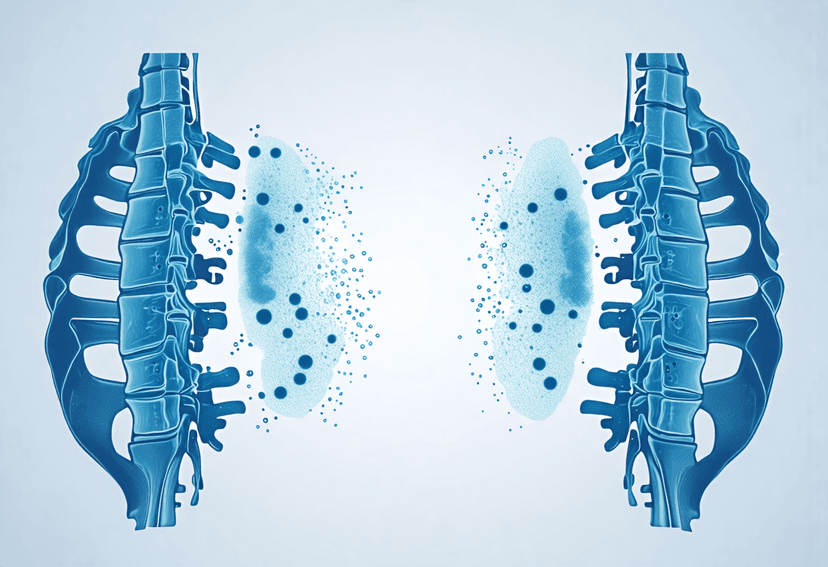
PET scan Risks and Side Effects: What to Expect
12 May, 2023
Positron Emission Tomography (PET) scans are a common diagnostic imaging tool used in modern medicine. PET scans are used to visualise the function and metabolic activity of organs and tissues within the body, making them an important tool for detecting and monitoring a wide range of medical conditions. While PET scans are generally considered to be safe, like any medical procedure, they do carry some risks and potential side effects. In this blog, we will discuss the potential risks and side effects of PET scans and what to expect during and after the procedure.
What is a PET scan?
Most popular procedures in India
PET scans use a radioactive tracer that is injected into the bloodstream, swallowed, or inhaled. The tracer is designed to bind to specific cells or organs in the body, emitting a signal that can be detected by the PET scanner. This signal is used to create detailed images of the body's internal structures and metabolic activity, allowing doctors to identify areas of abnormal tissue growth, inflammation, or other medical conditions.
What Are the Risks of PET Scans?
Wellness Treatments
Give yourself the time to relax
Lowest Prices Guaranteed!

Lowest Prices Guaranteed!
The amount of radiation used in a PET scan is relatively small and is not considered to be harmful in most cases. However, there are some potential risks associated with PET scans, including:
1. Allergic Reactions
Some patients may experience an allergic reaction to the radioactive tracer used in the PET scan. Symptoms of an allergic reaction can include itching, hives, swelling, or difficulty breathing. Patients should inform their doctor if they have a history of allergies or have experienced an allergic reaction to a previous PET scan.
2. Radiation Exposure
PET scans use a small amount of radiation, which can increase the risk of cancer or other radiation-related side effects. However, the amount of radiation used in a PET scan is generally considered to be safe, and the benefits of the test typically outweigh the risks.
3. Pregnancy Risks
Women who are pregnant or breastfeeding should not undergo a PET scan unless it is absolutely necessary. The radioactive tracer used in the PET scan can cross the placenta and be harmful to the developing fetus. Women should inform their doctor if they are pregnant or breastfeeding before undergoing a PET scan.
4. Kidney Damage
In rare cases, the radioactive tracer used in a PET scan can cause damage to the kidneys. Patients with pre-existing kidney problems should inform their doctor before undergoing a PET scan.
What Are the Side Effects of PET Scans?
Most patients do not experience any side effects after a PET scan. However, some patients may experience the following:
1. Nausea and Vomiting
Some patients may experience nausea or vomiting after the procedure, especially if they were given a sedative or contrast agent.
2. Headache
Some patients may experience a headache after the procedure, which is usually mild and goes away on its own.
3. Dizziness
Some patients may feel dizzy or lightheaded after the procedure, especially if they stand up too quickly.
4. Allergic Reactions
In rare cases, patients may experience an allergic reaction to the radioactive tracer used in the PET scan. Symptoms can include itching, hives, swelling, or difficulty breathing.
5. Injection Site Pain
Patients who receive an injection of the radioactive tracer may experience pain, redness, or swelling at the injection site.
What to Expect During and After a PET scan?
Before the procedure, patients will need to remove any metal objects, such as jewellery or glasses, and may be asked to wear a hospital gown. The patients will then receive an injection of the radioactive tracer, swallow a capsule containing the tracer, or inhale the tracer through a mask.
During the scan, the patient will lie on a table that moves through the PET scanner. The scanner will take images of the body's internal structures and metabolic activity. The scan typically takes between 30 and 60 minutes
After the scan, patients can resume their normal activities immediately. The radioactive tracer used in the PET scan will naturally decay and leave the body through urine and stool. Patients are advised to drink plenty of fluids to help flush the tracer out of their system.
If patients experience any discomfort or side effects after the procedure, they should inform their doctor immediately. Most side effects are mild and go away on their own within a few hours or days. However, if patients experience severe or persistent side effects, they should seek medical attention right away.
In conclusion, PET scans are a valuable tool for diagnosing and monitoring a wide range of medical conditions. While they do carry some potential risks and side effects, these are generally considered to be low and the benefits of the test typically outweigh the risks. Patients should inform their doctor of any medical conditions or allergies they have before undergoing a PET scan and follow any instructions given to them before and after the procedure to minimise any potential risks or side effects.
Related Blogs

VP Shunt Surgery: Risks and Side Effects
Understand the potential risks and side effects of VP shunt

The Risks and Complications of Transforaminal Lumbar Interbody Fusion (TLIF)
Learn about the risks and complications associated with Transforaminal Lumbar

Rotator Cuff Surgery: Understanding the Risks and Complications
What to know about potential risks and complications

Beyond the Basics: Understanding and Preparing for Potential Knee Replacement Complications
Understand the potential risks and complications of knee replacement surgery

The Complete Travel Guide for People with Varicose Veins: Expert Tips & Safety Measures
Learn how to manage varicose veins while traveling and what

Lifestyle Changes to Manage Varicose Veins
Learn how to manage varicose veins through diet, exercise, and










